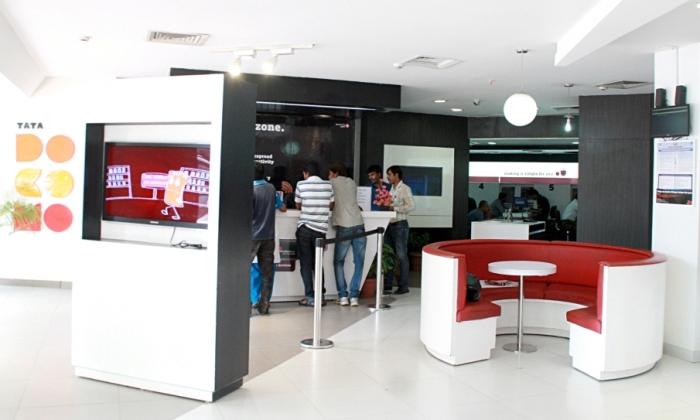Ram Prasad Mamidi, head – IT and CIO of Tata Teleservices, shared the telecom operator’s views on IT investments, key vendors and technology innovation.
# IT investment plans of TTSL
Tata Teleservices CIO said technology is one of the most critical enablers of innovation in the Indian telecom sector today. A robust IT backbone is what allows businesses to keep their hands firmly on the pulse of their customers. Our team is committed to nurturing the seamless integration of new technologies as one of the key pillars of our business. The company has a clear mandate to invest in any new technology that ensures added value to our customers and, as a result, to our business.
# How is IT improving customer experience across voice and data?
Technology is at the heart of our operations. It enables us to draw insights and preferences on all aspects of our customers’ behavior against hundreds of different criteria ranging from handset type and data usage, to re-charge preferences and roaming activation. We can then translate these into personalized experiences – not merely covering the subscription package itself – but all aspects of engagement from tailored offers to individualized customer support. New technologies have enabled agility in network management and real-time process upgrades to ensure our systems evolve with the changing needs of our customers.
# What are your focus areas in customer care?
Tata Teleservices is focused on making customer experience a key differentiator for the brand in the Indian telecom market. Over the last few months, we have invested heavily in end-to-end process mapping and upgrade.
From a technology perspective, one of our key requirements is to ensure that our customers get uninterrupted service whenever and wherever they connect. The whole eco-system of Network, Technology, IT is geared to ensure that the customer gets seamless and secure connectivity. Managing the network inventory and capacity, huge volumes of customer and call data, ensuring an efficient customer service delivery through a network of call centers and ensuring our readiness and capability to meet upcoming regulatory changes define some of the more critical technology requirements. The system needs to be flexible enough to incorporate the requirements in a secure and timely way at an optimal cost.
# How is big data transforming Tata Teleservices?
At present, there is a growing mandate across the Tata Group of companies to effectively use big data solutions to solve business problems and Tata Teleservices is a key participant in this journey. Tata Teleservices has been one of the early movers in the usage of big data solutions in India, which has resulted in very efficient solutions that also deliver information in a timely manner.
While the previous generation was happy to consume any content or offering by a brand, the millennial generation wants brands to hear their voices and incorporate their opinions before creating anything for them. Keeping this insight in mind, we place solid emphasis on end-to-end customer experience management. Big data enables the brand to analyse individual customer requirements and use the insights to enable personalized delivery of service through a responsive customer service organization and a dynamic information technology eco-system.

# What are the latest trends in IT for the telecommunications sector?
Technology advancements today are a lot more rapid than in the past. The communications world is an adherent of the Half-Life theory according to which every new technology takes half the time to mainstream as its predecessor. For example, the adoption of smartphones in Tier II and III cities has happened very rapidly with the advent of high-speed networks. This trend is not likely to abate in the coming years.
The world will continue to gravitate towards mobility, which requires that you make yourself independent of networks, platforms and devices. This spawns three distinct growth trends in 2015: increasing cloud adoption for access to content and applications; abundance of bandwidth and upscaling of the information security infrastructure.
On its own, big data will gain a firmer foothold with telecom operators as hyper-competition drives them to strengthen their data management and analytics capabilities to drill deep and wide for gaining better insights to enhance customer experience at every stage of interaction.
There are many advances that are ready for launch from a technological perspective and that have the potential to revolutionize. For example, IoT should gain pace, at least in vertical segments, but this is subject to various other non-technological factors. Smart Cities are another example, as is the mass adoption of Mobile Financial Services, Mobile-Health and a host of other Mobile Value Added Services.
This year is going to be one of technological leaps that will introduce India to the new world of communications that the telecom and IT convergence is enabling.
# What are your demands from IT vendors / partners?
Our vendors and partners are critical elements in the delivery value chain and their contribution is essential to our success. The ability of the vendor to understand the dynamics of our business environment, and feel the pulse of our customer, is what defines the new wave of collaboration. A partnership must be predicated on value and not cost, in order to bring in the best practices that help the business succeed.
Our key expectation from partners is a shared sense of urgency for achieving the stated business goals. If this is in place, all else is a matter of detail. Given the dynamic nature of business and a changing regulatory environment, a degree of flexibility on the part of the vendor is a clear norm.
It won’t be out of place to re-emphasize that business today happens between networks of companies. A clear expectation from vendors is to demonstrate consistency, while setting higher benchmarks of performance and providing thought leadership in areas where the principal may not have core competence. To the external world, the relationship has to be seamless.
Baburajan K
[email protected]





